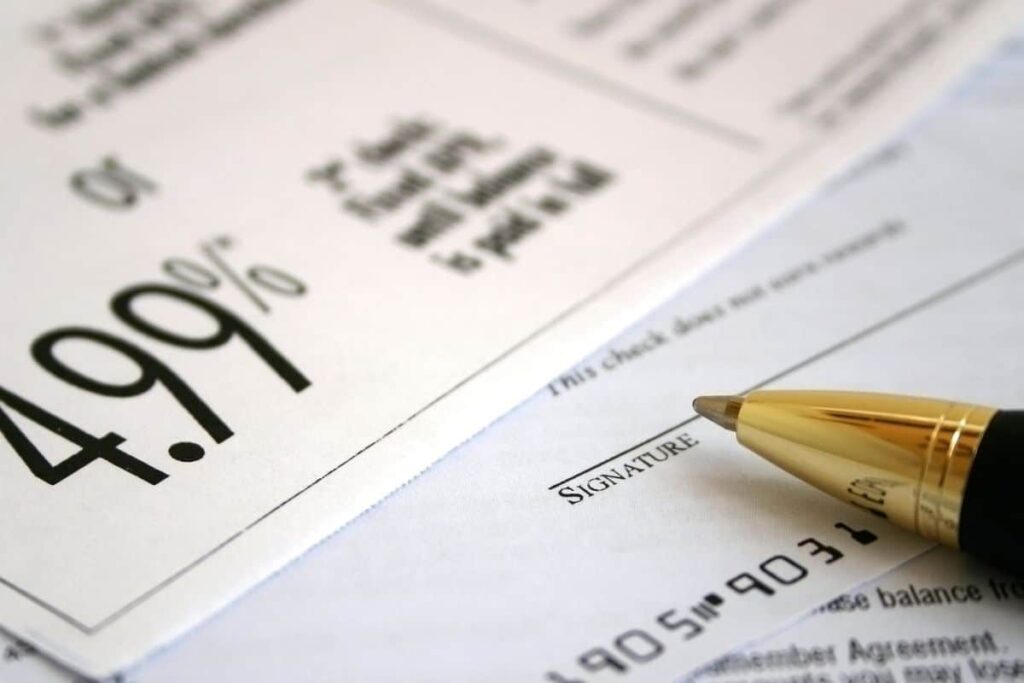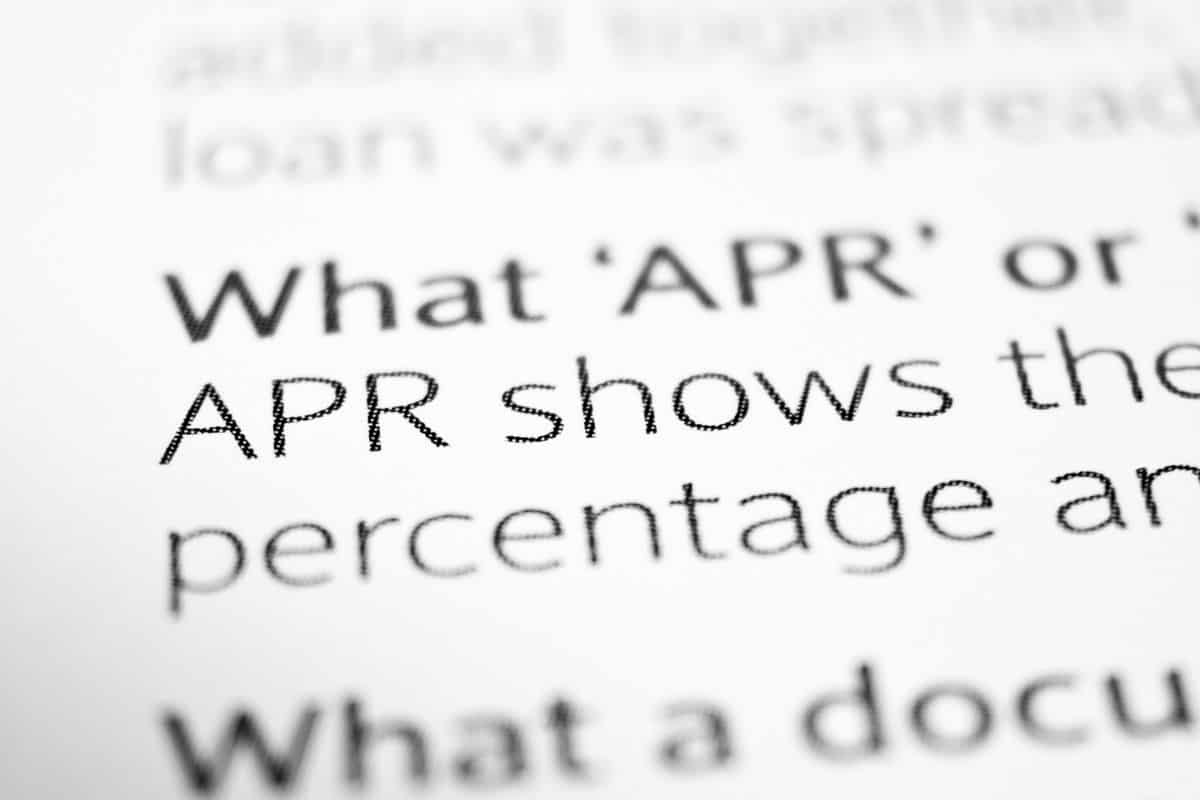If you have ever borrowed money you will probably know that whoever lends you the money, be it a bank, credit union, or credit card company, has every right to charge you interest on the money that you are borrowing.
However, with credit cards, interest is usually shown as purchase APR. This is not the only type of interest that a credit card company may charge you through, but it is the most important and common type of interest rate that is known to be affiliated with credit cards.
Purchase APR is basically just the interest that credit card companies will apply, they are not paid off in full before the grace period ends though.
Yet, there will be other financial factors you should take into consideration. This includes things such as introductory rates and penalties, which can make all credit card APR associations a little more complex.
So, let us better understand purchase APR. Without any ado, let’s jump right in.
Understanding Purchase APR
Standard purchase APR is just the basic interest rate that is applied to a purchase in the case that no other APR is more significant.
It is normally a variable interest rate that is applied, which means that any purchase APR you have may be able to rise or fall depending on the prime interest rate.
However, in a majority of situations, you won’t even notice that there has been a change, it is usually very minor.
So, if you are to have a balance on your credit card then the purchase APR is something that you should be aware of, as it can make a rather significant difference in what interest you will likely end up paying over the length of your usage.
So, if you were to make a large payment on your credit card, let’s say $6,000, and your APR was at 15%, and you paid it off in $400 monthly payments, you would have managed to pay off the balance in 1 year and 5 months, paying a grand total of $686 interest on this.
However, if you were to make this purchase on a card with a higher APR, perhaps 10% higher, then it would take an extra few months to pay this off in the same payments and the interest you would have to pay would be nearly double!
This is the reason you need to always be aware of the APR, and understand how it works on your credit cards. Not knowing what this is can leave you with some rather large surprises and could even result in you landing in debt!
How Does It Work?

We have briefly covered how it works in our above example, but let’s go over this a bit more, because, as we said, it is very important to you to understand what this is and how it works with your credit cards.
You see, a credit card company will charge interest in accordance with the card’s APR (annual percentage rate). Of course, there are plenty of types of rates you might be charged.
The purchase APR is the rate that the company whom your credit card is with will charge you at when you make purchases with the card if you have a balance. This is what it is known as when you do not pay on your monthly and just roll it over to the next month’s payment.
However, that being said, there are some cards which will have a purchase APR promotion. These promotions will offer introductory rates at a lower rate on new purchases for a particular period of time.
You can see these introductory rates that may last for a few months to nearly two years, it just depends on what deals the credit card company is offering.
Introductory purchase APR can offer you a whole new way that you can pay off your purchases at a lower rate, sometimes these rates can even reach zero!
However, once the time for the promotion ends, then the standard APR rate will come into play and your rate will increase.
But, do not be fooled, this increase will stand on any new purchases, and purchases you have that are existing.
So, even if you bought something on your card when you were using the introductory rate, if you have not paid it off in full by the time the standard rate comes in, you will pay the standard rate on that as well.
Can You Save With An Introductory Purchase APR?
Let’s think some more about introductory purchase APR, we know that you will be thinking about it now.
How much can you actually save by taking advantage of introductory APR? Well, if we are honest, potentially hundreds! Maybe even thousands, depending on your individual situation.
So, if you use your card with a high purchase APR rate of say, 19 percent APR, and you buy a new couch for $3,000. You will make monthly payments of around $193 for around a year and a half.
You would pay off this balance, and presuming that you do not buy anything else with this card, you would be fine. However, thanks to that sneaky APR rate, you will also pay over $450 in APR.
Yet, if you have an introductory APR on a different card and this rate is at a beautiful 0% for 18 months, you could make all these payments for that couch at $167 and not have to pay a single penny in interest at all! Well, as long as you pay on time!
What Are Some Key Things To Know?
Knowing what purchase APR is, let’s give you some more information that you should know about this aspect of credit card usage.
First of all, considering the introductory APR to normal APR rates, you can save some money, if you are able to pay off large purchases before the selected period ends.
Also, you should always read the T’s & C’s of your card’s terms to be aware of when the standard purchase APR will be effective from. Introductory APR’s are variable, and so it can change at any given time.
The only APR rate that does not vary is a fixed-rate APR.
Finally, you should always remember that it is totally possible for you to lose an APR offer if you do not make a minimum payment by the date that it is due.
You may also lose the rate on some introductory APR offer if you were to go over the limit of your card, not pay back on time, or break any other terms and conditions of your card. So, be cautious and always read the small print!
How Is APR Different From Interest Rate?
Finally, we want to talk about how APR and interest rate differs, and they do sound similar don’t they?
Well, APR simply means annual percentage rate, which is the measured cost of borrowing credit over the course of a year.
This will be calculated per year and can be affected by anything from the credit you have to the payment timings.
You should understand the interest rate and the APR. The interest rate is what you pay as an addition to the monthly payments you make, the APR is the percentage you pay calculated by cost per annum.
To Conclude
To wrap things up. APR is something that exists with credit cards, although you can get other types of APR in other areas of financing and lending, it is best affiliated with credit cards.
Understanding APR is very important for anyone borrowing money or using credit, as the rates you are charged will influence your payments.
When you agree to an APR always read the small print as you may find that you have a 0% introductory APR and you will need to be aware of when the regular APR will be introduced.
